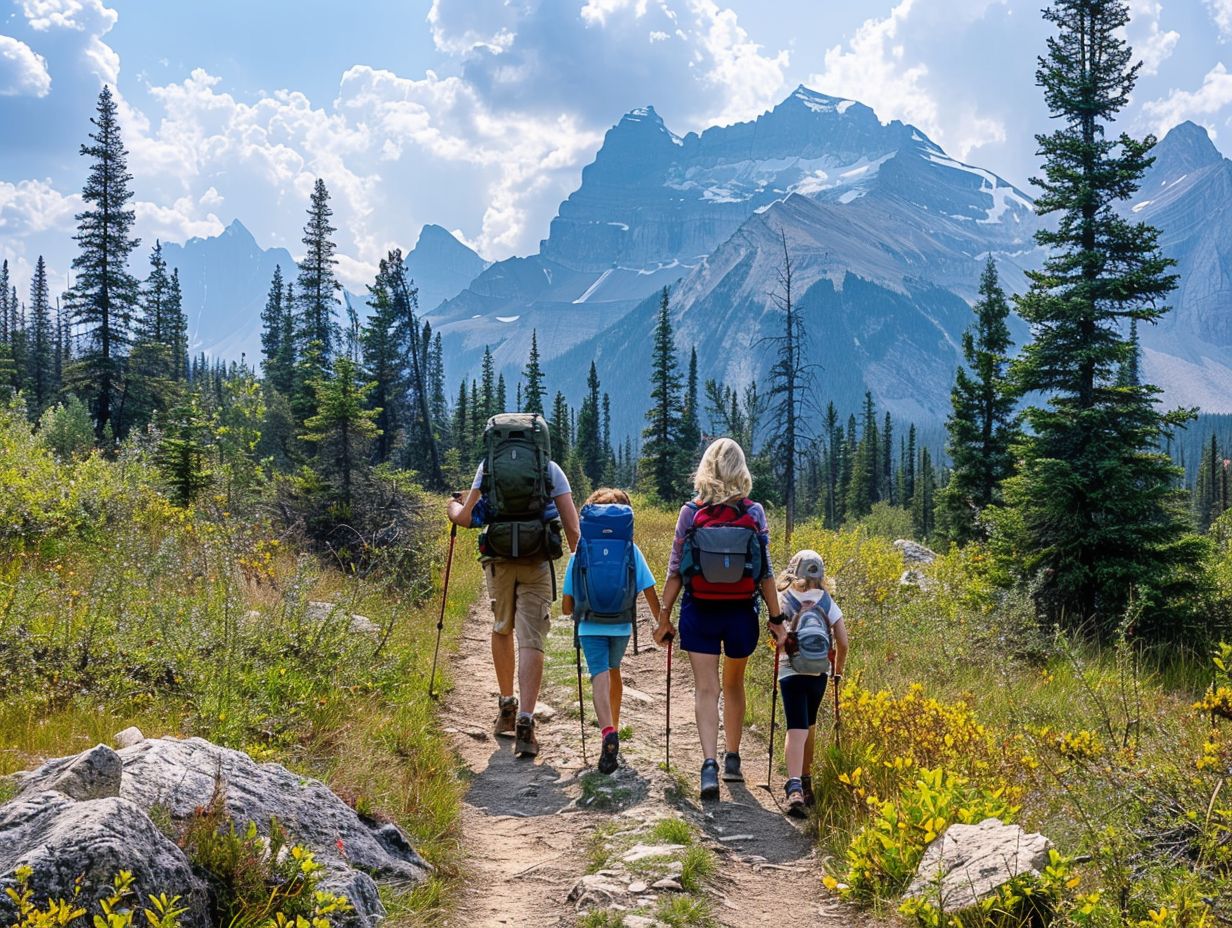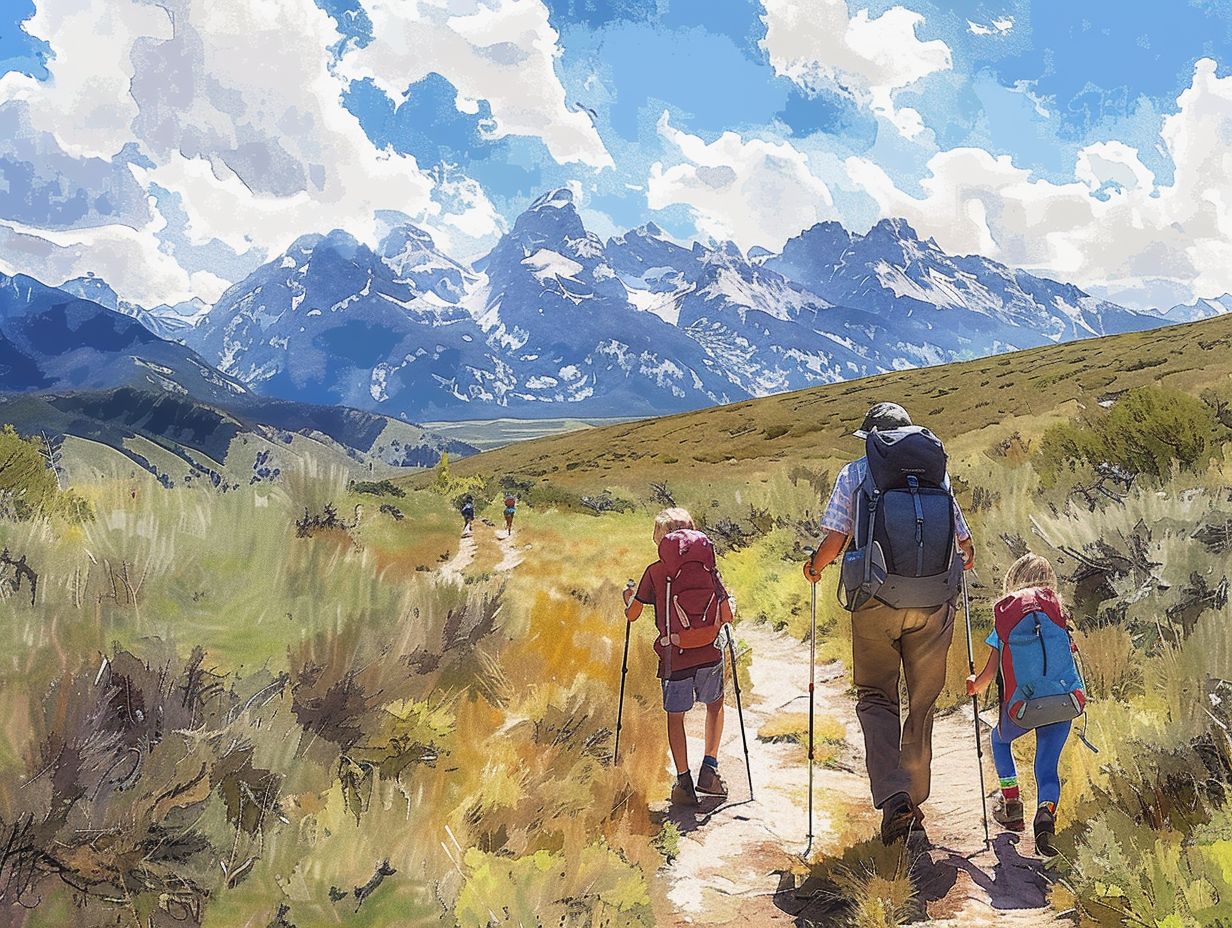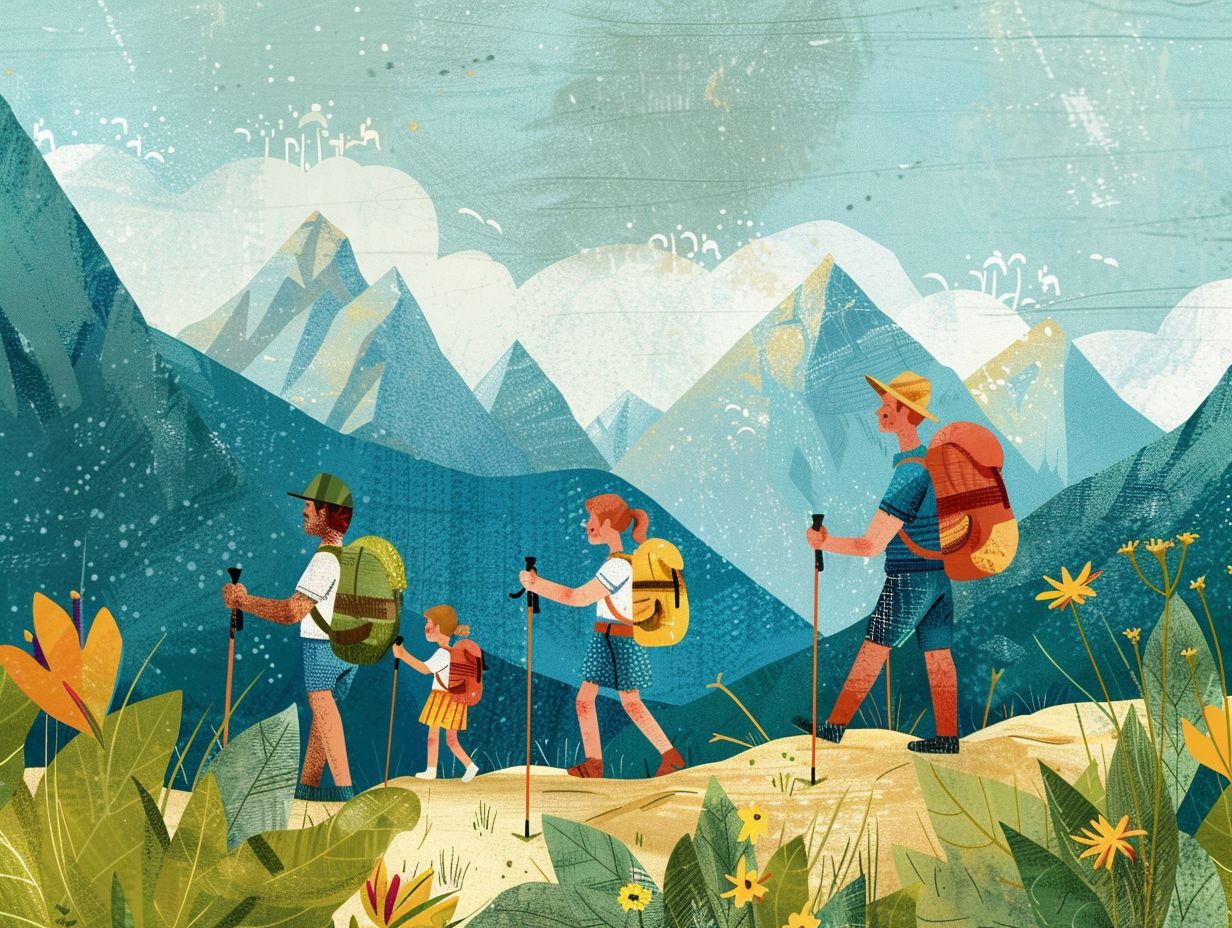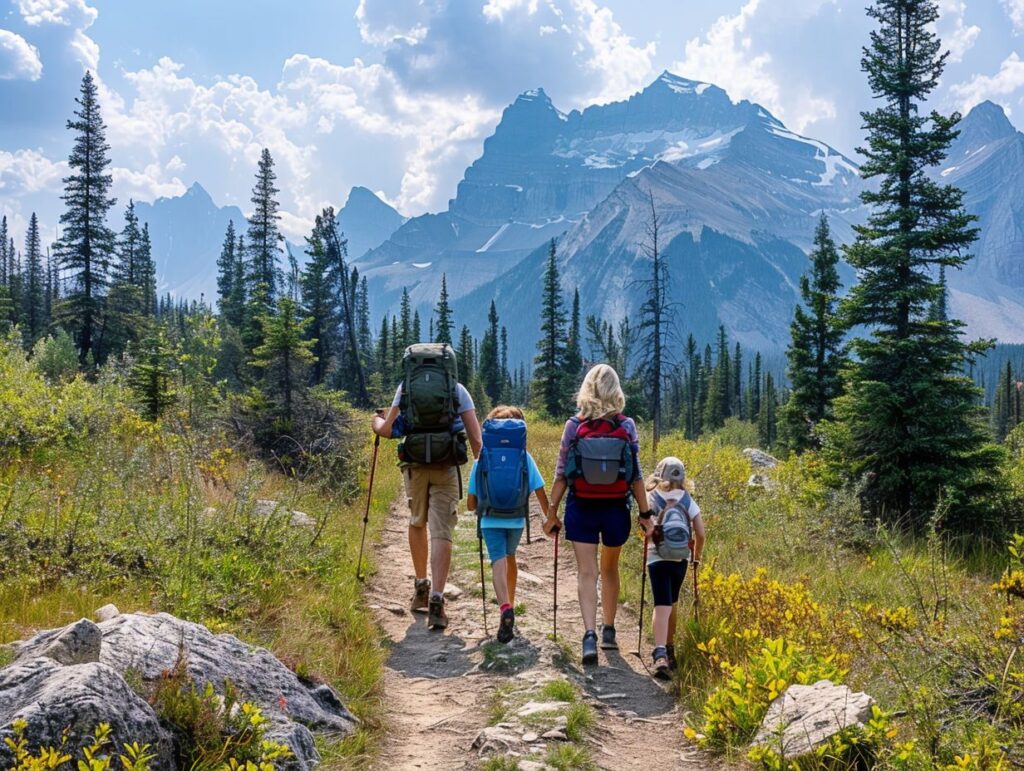Are you looking to create unforgettable memories with your loved ones while enjoying the great outdoors? Planning a family hiking adventure might just be the perfect solution!
We will explore the numerous benefits of spending time outside, the importance of quality family time, how to choose the right hiking trail, what essentials to pack for the journey, and tips on preparing your children for the hike. So lace up your hiking boots and get ready for an exciting adventure with your family!
Key Takeaways:

- Spend quality time with your family and reap the benefits of spending time outdoors by planning a family hiking adventure.
- Choose the right hiking trail by considering the difficulty level, family-friendly options, and available amenities and facilities.
- Pack essential gear, a first aid kit, snacks and water, appropriate clothing and footwear, and navigation tools for a successful family hiking adventure.
What to Pack for a Family Hiking Adventure
Preparing for a family hiking expedition involves assembling the appropriate kit and essentials to ensure the safety, comfort, and enjoyment of each family member.
1. Essential Gear
Critical hiking gear includes essential items such as a first aid kit, navigation tools, and appropriate clothing and footwear, all of which are essential for a safe and successful hiking excursion.
Supplementing these essentials with provisions like extra food and water, a head torch or torch, a multi-tool, and a whistle can significantly bolster one’s level of preparedness. These items collectively constitute the 10 Essentials, a comprehensive checklist designed to ensure hikers are adequately equipped to handle emergency situations.
Additionally, adherence to Leave No Trace principles is vital to minimise environmental impact while hiking. For more comprehensive guidance on hiking gear and safety protocols, individuals are encouraged to explore a reputable online resource focusing on hiking-related content, offering valuable insights for outdoor enthusiasts.
2. First Aid Kit
The presence of a well-equipped first aid kit is a crucial component of one’s hiking gear, ensuring preparedness for minor injuries and emergencies. Possessing a first aid kit can significantly enhance one’s ability to address unforeseen circumstances while traversing remote areas.
When compiling the contents of the kit, it is imperative to include items such as adhesive plasters, dressings, antiseptic wipes, tweezers, and adhesive tape. Additionally, essentials like painkillers, blister treatment supplies, and a thermometer are essential for providing relief and essential care during hiking excursions.
Moreover, proficiency in utilising the first aid kit is equally pivotal to its efficacy. Becoming acquainted with the kit’s contents and practising fundamental first aid procedures are essential steps in fostering confidence when confronted with injuries while on the trail.
3. Snacks and Water
It is crucial to bring an ample supply of snacks and water to ensure the maintenance of energy levels and hydration during a hike, particularly when children are involved.
When selecting snacks, it is advisable to opt for high-energy options such as trail mix, granola bars, and dried fruits to keep all participants fuelled and content. It is essential to choose snacks that are lightweight and portable, such as nuts and energy bars.
Adequate hydration is of paramount importance, necessitating the inclusion of a sufficient amount of water or electrolyte-rich beverages to prevent dehydration. Utilising gallon-sized zip-top plastic bags presents a convenient method for organising and transporting snacks, facilitating easy access while on the trail.
4. Clothing and Footwear
Selecting appropriate clothing and footwear is crucial for a comfortable and secure hiking expedition, as it enables the individual to adapt to fluctuating weather conditions. Layering plays a pivotal role in the selection of hiking attire.
Start with a moisture-wicking base layer to effectively manage sweat, followed by insulating layers for thermal insulation, culminating with a waterproof and windproof outer shell.
In terms of footwear, it is advisable to choose durable hiking boots that provide substantial ankle support and feature a traction-rich sole for stability across diverse terrains.
Prioritise break-in period for your boots before embarking on the trail to mitigate the risk of developing blisters. Investing in superior-quality equipment serves to not only elevate comfort levels but also ensures the individual’s safety during outdoor excursions.
5. Navigation Tools
Reliable navigation tools, such as maps and hiking apps like AllTrails, are essential for maintaining route accuracy during hiking trips.
A thorough understanding of the terrain and prominent landmarks along the intended path can reduce the risks of becoming disoriented or straying off course. Physical maps act as tangible navigation aids, offering guidance even in cases of technological failure.
The use of digital apps such as GPS trackers enables real-time monitoring, giving updates on distance covered and upcoming intersections. It is wise not to depend solely on a single tool; having a backup plan, like carrying a compass or knowing celestial navigation methods for orientation, ensures a smoother trek with increased confidence.
Preparing Your Children for the Hike

The process of preparing children for a hike encompasses establishing realistic expectations, imparting fundamental hiking safety practices, and engaging them in the planning and packing procedures to instil enthusiasm and readiness.
1. Set Realistic Expectations
Establishing realistic expectations is crucial to ensuring that children are mentally and physically prepared for the hike, thereby reducing the likelihood of burnout or frustration. It is imperative for parents and guardians to effectively communicate the duration and level of difficulty of the hike to children, enabling them to anticipate what lies ahead.
A progressive approach to building endurance in children involves initiating with shorter walks in familiar environments and gradually extending the distance. Prior exposure to hiking across diverse terrains can assist children in adapting to challenges such as inclines or rugged pathways.
Through offering adequate preparation and encouragement, children can cultivate the essential skills and self-assurance necessary to navigate longer hikes effortlessly.
2. Teach Basic Hiking Safety
It is imperative to provide children with instruction on basic hiking safety to ensure their understanding of how to remain safe and preserve the environment while enjoying outdoor activities.
One of the primary safety measures to emphasize during hiking excursions is the necessity of adhering to designated paths to prevent disorientation or accidental entry into hazardous locations.
Additionally, it is essential to educate children on the proper use of navigational tools, such as maps and compasses, to help them retrace their steps in the event of wandering off the designated route.
Incorporating the Leave No Trace principles into children’s outdoor education, including the importance of avoiding littering and showing respect for the natural surroundings, is crucial for the conservation of outdoor spaces.
Equally important is the use of appropriate equipment, such as sturdy footwear and weather-appropriate clothing, to enhance comfort and safety. The supervision of adults plays a crucial role in providing guidance and ensuring children follow safety procedures during their hiking experiences.
3. Involve Them in Planning and Packing
Engaging children in the planning and packing stages can enhance their excitement for the hike and cultivate their understanding of the significance of preparedness. It is advisable to enable children by allowing them to participate in the selection of the trail, thereby fostering a sense of involvement and investment in the expedition.
This can be achieved by encouraging them to conduct research on various trail options or collaboratively examining maps to determine the most suitable route.
When organising the gear for the hike, it is beneficial to include children in the development of a checklist outlining essential items such as water, snacks, a first aid kit, and appropriate attire. By elucidating the importance of each item, children can develop a sense of responsibility and enablement.
Additionally, preparing snacks together can serve as an engaging and educational activity. Allowing children to choose healthy snack options and involving them in the preparation process can augment the enjoyment of snack time during the hike.
On the Day of the Hike
On the day of the hike, it is essential to:
- Start the activity early,
- Observe scheduled intervals for breaks,
- Provide encouragement and positive reinforcement to the children, and
- Maintain a flexible approach to ensure an enjoyable and memorable experience for all participants.
1. Start Early
Commencing the hike early in the day can be advantageous in avoiding crowds and experiencing cooler temperatures, thereby enhancing the overall enjoyment of the excursion for all participants.
Moreover, embarking on the trail in the early hours not only guarantees solitude but also offers the opportunity to witness nature awakening in tranquillity. The gentle morning light has the ability to transform landscapes, unveiling breathtaking vistas that are not to be missed.
An early start provides the added benefit of encountering wildlife that is typically more active during these times. To ensure a seamless commencement, it is advisable to prepare gear and snacks the night prior, enabling a swift departure in the morning without any unnecessary delays.
2. Take Breaks and Stay Hydrated
It is imperative to take regular breaks and remain adequately hydrated to sustain energy and comfort while engaging in a hike, particularly when accompanied by younger children.
Promoting regular water intake among all participants is vital in preventing dehydration and fatigue, which are prevalent occurrences during physical exertion. Strategically planning rest stops not only affords hikers the opportunity to revitalise but also facilitates essential breaks to deter overexertion.
Inclusion of snacks such as fruits, nuts, and energy bars can contribute to sustaining energy levels and supplying necessary nutrients. These brief intervals and nutritious snacks can significantly enhance the overall enjoyment and success of the hiking endeavor.
3. Encourage and Praise Your Children

Providing encouragement and commendation to your children throughout the hike can enhance their enthusiasm and confidence, thereby improving their overall experience. Recognising their endeavours, regardless of size, can significantly contribute to sustaining their motivation levels.
Milestones achieved along the trail can be acknowledged with a brief break for snacks or by commending their resilience in facing obstacles. Employing positive reinforcement methods, such as verbal expressions of approval or physical gestures like high-fives, can bolster their self-assurance and maintain their interest in the activity.
Creating and upholding a supportive and affirmative setting, where errors are viewed as valuable learning opportunities, is crucial. By fostering a climate of positivity, you can transform the hike into a memorable and rewarding adventure for your children.
4. Be Flexible and Have Fun
Maintaining flexibility and prioritising enjoyment are crucial factors for ensuring a successful and pleasant hiking experience for the entire family. Adjusting to the energy and mood of the group is vital when embarking on a hike as it cultivates a harmonious atmosphere and nurtures a sense of unity.
Embracing spontaneity can result in unforeseen yet thrilling discoveries along the trail, injecting an element of excitement into the journey.
By being receptive to changes in plans, individuals can create space for new encounters and moments of connection that enhance the hike’s memorability. A flexible mindset not only enriches the overall enjoyment of the hike but also promotes adaptability and resilience, qualities that are beneficial both on and off the trail.
Frequently Asked Questions
What are some important factors to consider when planning a family hiking adventure?
Some important factors to consider when planning a family hiking adventure include the difficulty level of the trail, the distance and duration of the hike, the age and physical abilities of family members, and the season/weather conditions.
Where can I find information on family-friendly hiking trails?
You can find information on family-friendly hiking trails by researching online, asking for recommendations from friends or family, or visiting your local parks and recreation department.
How can I ensure the safety of my family on a hiking adventure?
To ensure the safety of your family on a hiking adventure, make sure to pack necessary supplies such as water, snacks, first aid kit, and a map. It is also important to stay together as a group, follow trail markers, and be aware of potential hazards.
What should I pack for a family hiking adventure?
Some essential items to pack for a family hiking adventure include comfortable and sturdy shoes, appropriate clothing, sunscreen, insect repellent, a map and compass, plenty of water, snacks, and a first aid kit.
Can I bring my young children on a family hiking adventure?
Yes, you can bring young children on a family hiking adventure. However, it is important to choose a trail that is suitable for their age and physical abilities, and to take frequent breaks and plan for shorter distances.
How can I make a family hiking adventure more enjoyable for everyone?
To make a family hiking adventure enjoyable for everyone, involve everyone in the planning process, choose a trail with interesting sights or activities, and encourage each family member to set their own pace. It is also important to take breaks and allow time for rest and exploration.

